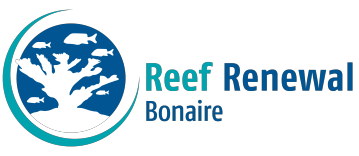July 2022 - December 2025
RRFB is actively restoring key populations of 2 branching coral species in Lac Bay, staghorn (Acropora cervicornis) and elkhorn coral (Acropora palmata). Widespread bleaching, disease, and poor water quality in the bay, as well as throughout the Caribbean, have led to a decline in Acropora populations. By harnessing asexual fragmentation and selective propagation, we aim to increase the abundance and genetic diversity of wild coral populations in this unique ecosystem.
This project is a vital piece of our wider restoration strategy, allowing us to diversify the genotypes we propagate, increase overall coral capacity, inform selective breeding efforts, and compare the efficacy of nursery designs.
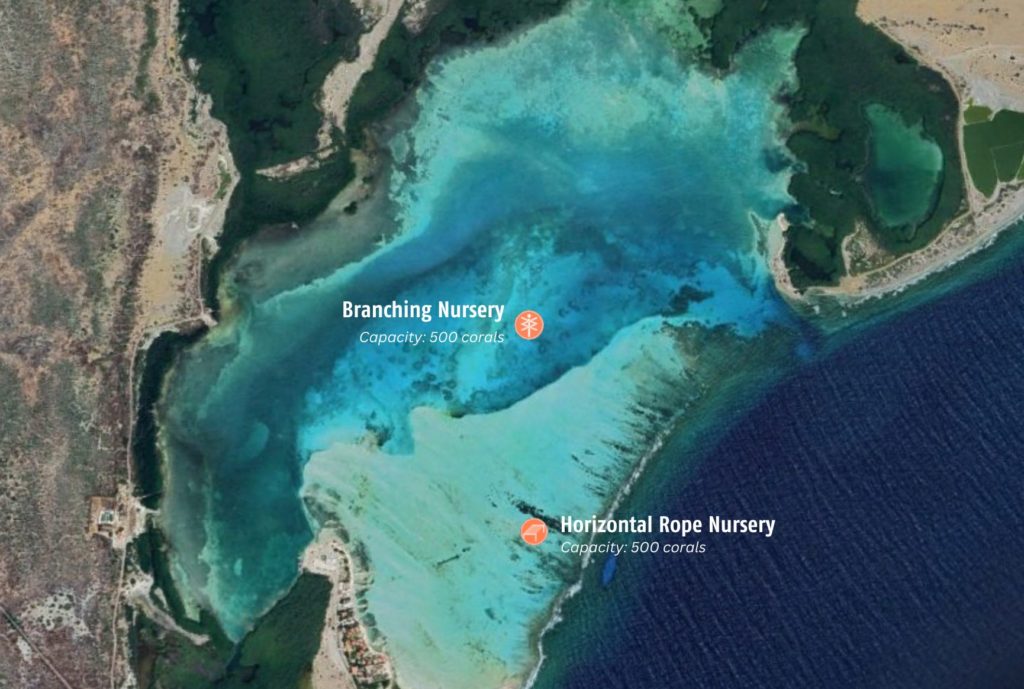
The recovery of Lac Bay Acropora populations is made possible thanks to support from WWF Dutch Caribbean, and began in 2022 in collaboration with STINAPA Bonaire as part of the RESEMBID project.
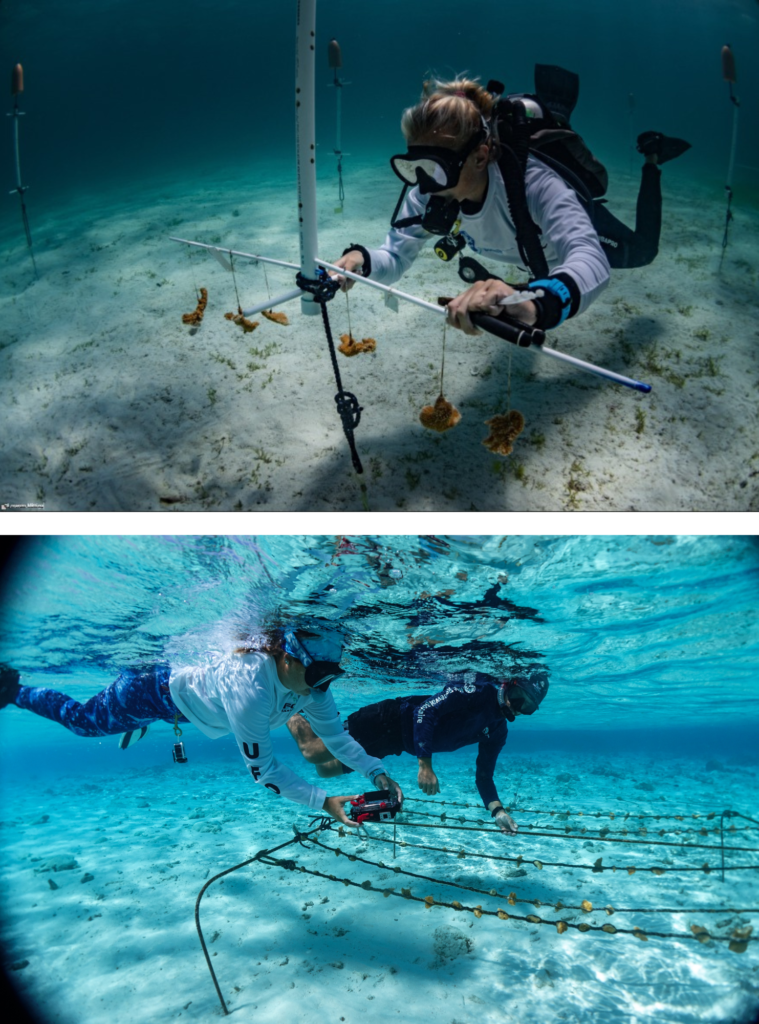
Specially Designed Nurseries
We have two coral nurseries in Lac Bay, both with modified designs to account for the unique depth and bottom composition of the bay. Together, they can hold up to 1,000 coral fragments at a time.
Our vertical branching nursery is located in the deeper portion of the bay, consisting of 10 tree structures. At 2.5 meters depth, each is about half the size of a nursery tree at a deeper site on the west coast.
Our horizontal rope nursery is located in Lac’s shallow, backreef area near clusters of wild staghorn (Acropora cervicornis) and elkhorn coral (Acropora palmata). Its horizontal layout allows us to propagate more corals at a shallow depth, optimal for elkhorn growth.
Evaluating Techniques
We’re closely monitoring coral performance in each nursery, not only to identify more resilient genotypes but also to compare the efficacy of either nursery design. Evaluating our techniques is an integral piece of our adaptive management strategy and allows us to make informed restoration decisions going forward.
Expanding Locations and Genotypes
It’s key to adapt our restoration techniques to new locations with unique environmental conditions. Due to its shallow depth and enclosed shape, challenges brought by high sea temperatures and introduction of disease are magnified for Lac’s coral populations.
Broodstock corals in both nurseries were taken from west coast nurseries and wild colonies in the bay. Corals selected belong to genotypes that have exhibited increased resilience to bleaching events, disease, and other stressors. We closely monitor the health of all nursery corals and note the response of each genotype to changing conditions to inform our selective propagation efforts.
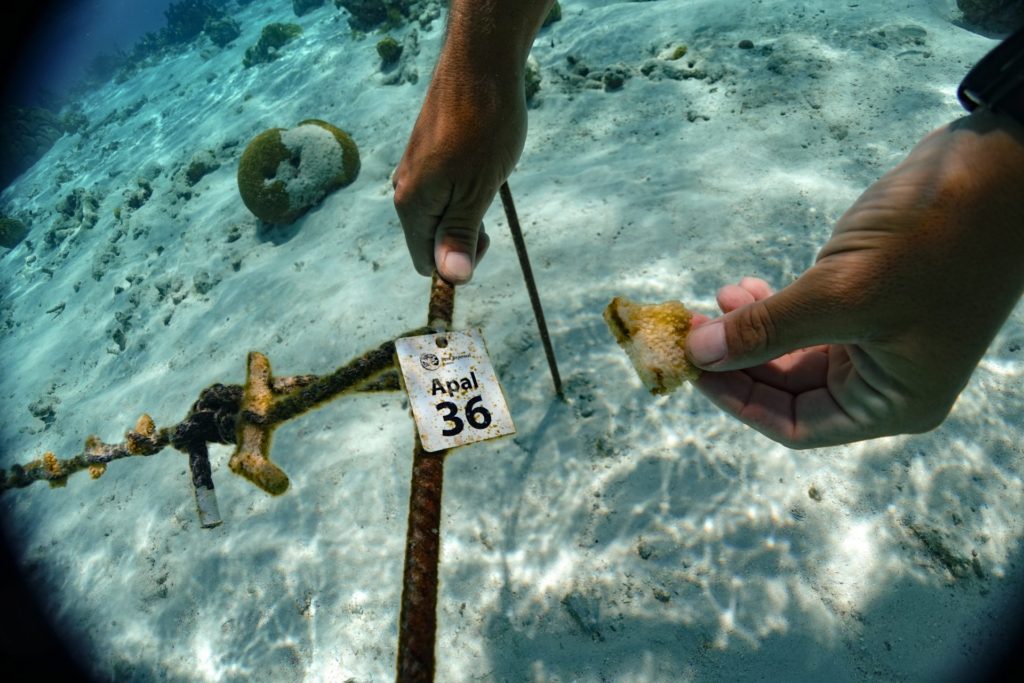
Why is genetic diversity so important?
The more genotypes available in a given population of coral, the better the chance that some will survive population bottlenecks like ocean heatwaves, stony coral tissue loss disease (SCTLD), pollution events, and more. We use selective propagation at our nursery sites an effort to increase both the abundance and resilience of corals that we outplant on the reef.
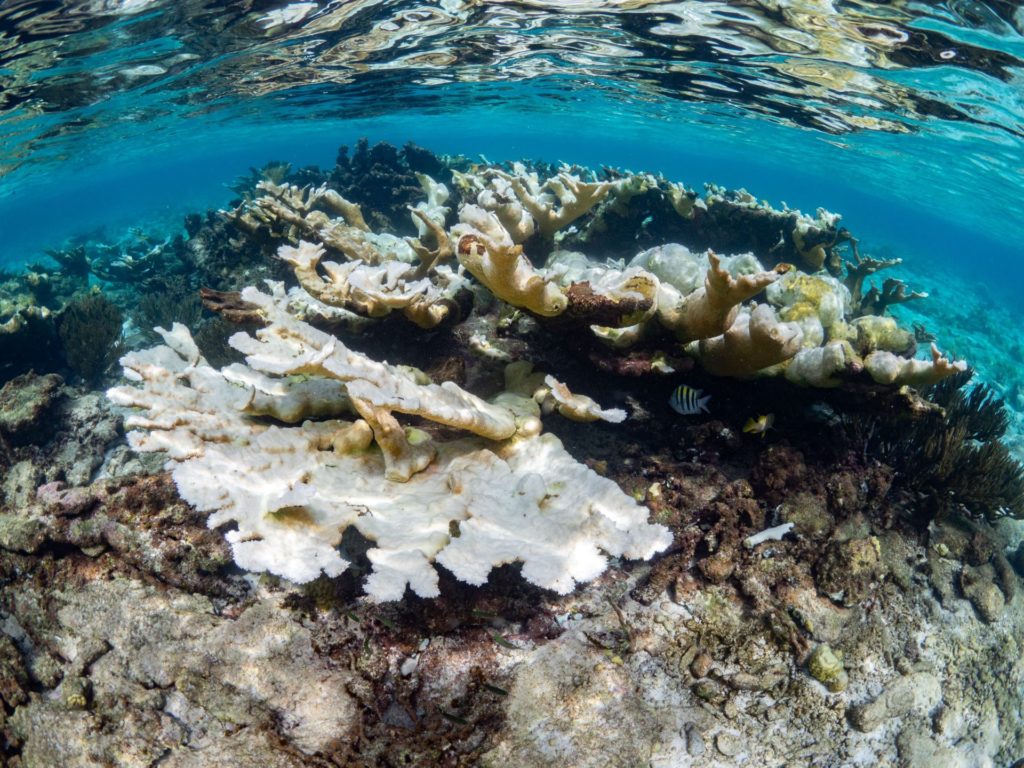
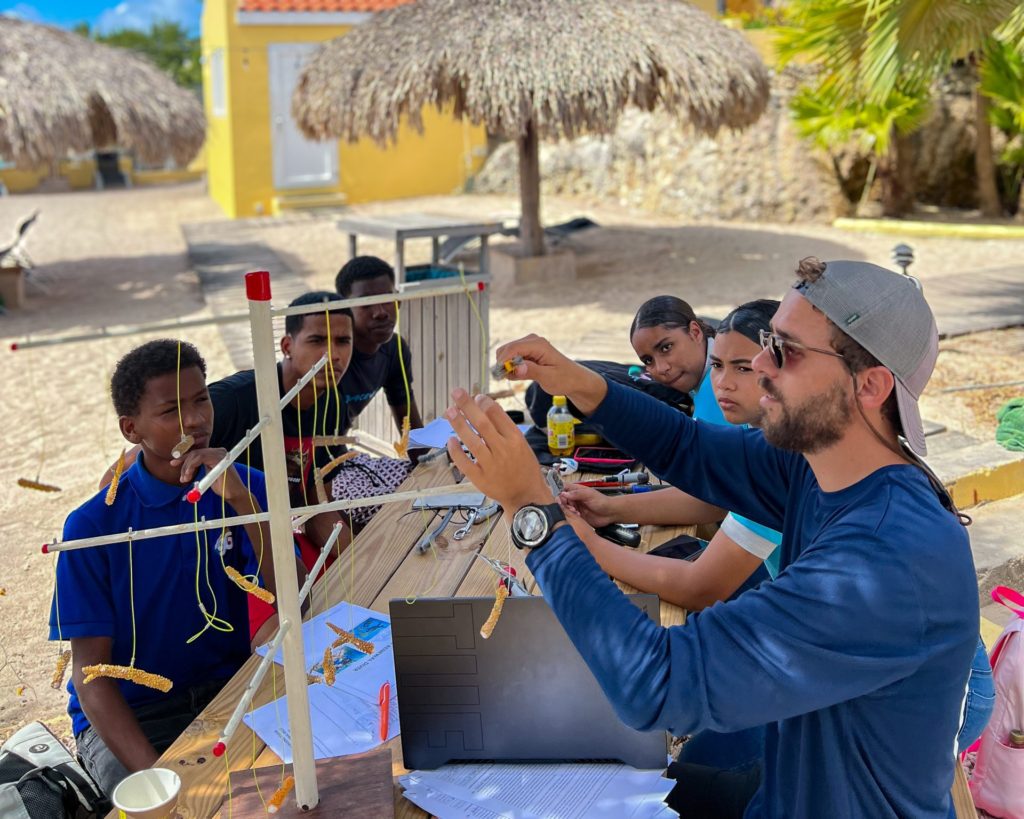
Restoration Education
As with any project, engaging our community is crucial to the success of our restoration efforts. We aim to inform community members on our progress restoring coral populations in Lac Bay via educational presentations, island-wide community events, and interactive experiences tailored for schools and young students of all ages. Additionally, we reach hundreds of residents and visitors through our volunteer program each year. Trained volunteers regularly accompany our team on routine trips to Lac’s branching coral nursery, in an effort to help us maintain and monitor our stock.
Project Supporters and Collaborators
This project is currently supported by WWF Dutch Caribbean. It’s part of the larger “Lac Pa Semper” project which began in 2022 with STINAPA Bonaire as part of the RESEMBID project. All restoration activities align with the Bonaire National Marine Park Management Plan 2022-2028, published by STINAPA Bonaire.
